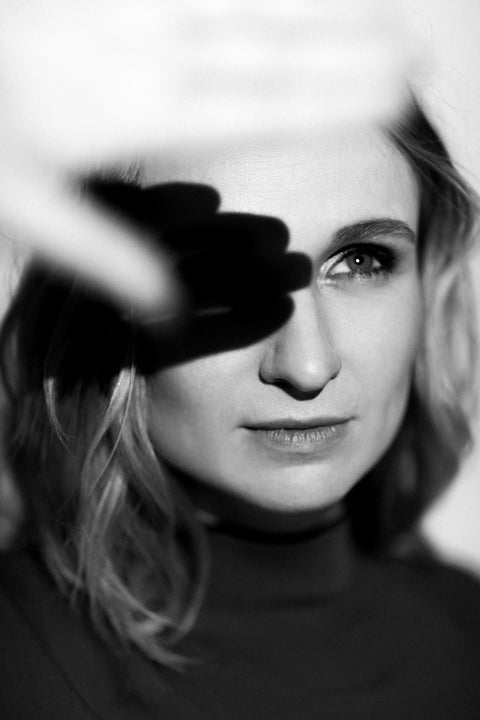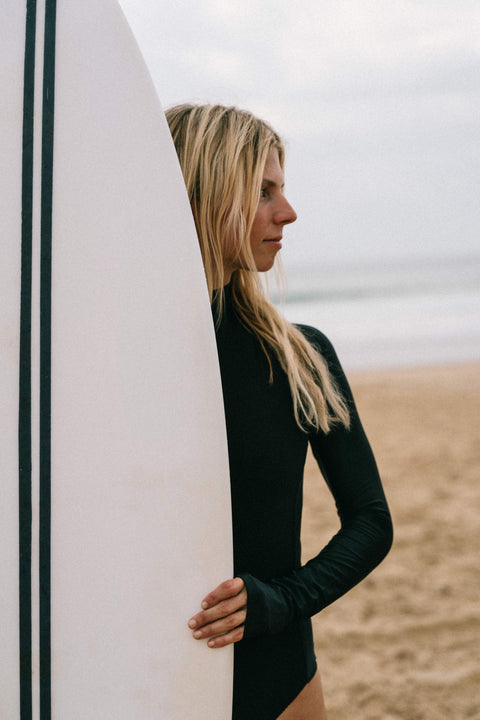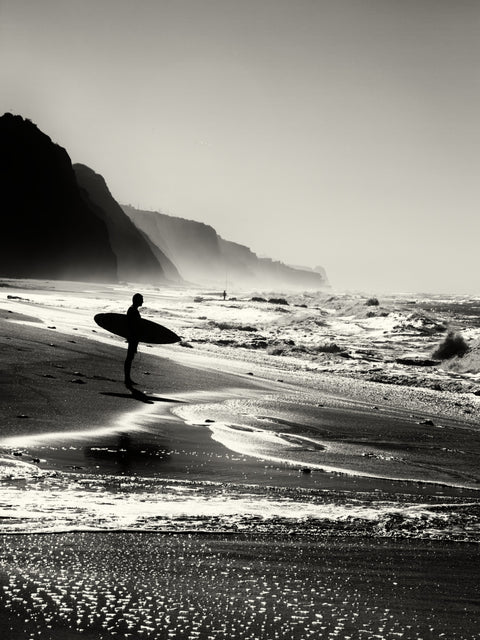
Beyond Sunscreen: A Dermatologist's Guide to Sun Protection for Surfers
By Dr. Markus Wiesender,
Board-Certified Dermatologist, Vienna, Austria
Dr. Markus Wiesender has a medical degree from the Medical University of Vienna, with international study placements at the University of Sydney and Ludwig Maximilian University of Munich. Specialized in dermatology and venereology; board-certified in skin and venereal diseases. Member of the Austrian Society of Dermatology and Venereology (ÖGDV).
I grew up in Austria, far from the ocean, but I’ve spent much of my adult life chasing waves around the world. Most of the time, I surf in France, Spain, and Portugal because they’re easy to reach and the waves are consistently good. But sometimes I head to warmer, tropical waters on the other side of the world, where sun protection becomes a real challenge. On one trip to Bali with friends, I accidentally used the wrong sunscreen and ended up with a badly sunburned nose. My friends jokingly called me the “sunburned dermatologist.” Ironic, I know. Even specialists make mistakes.
As both a dermatologist and a dedicated surfer, I understand the joy of long sessions in the water and the serious risks they pose to your skin. Most people don’t realize how quickly sun damage builds up or how little sunscreen protects once you're in the lineup. In my clinic, I see the consequences every day: sunburns, premature aging, and unfortunately, skin cancer. That’s why I wrote this article. I want to clear up some of the most common questions I hear about sun protection in the surf. We’ll cover what really happens to your skin in the sun and salt water, why sunscreen often fails in the water, and what actually works to prevent damage.

Surfing, Sun Damage, and How to Actually Protect Your Skin, Dr. Markus Wiesender answers the most common questions about skin health in the water.
Why is sun protection so important for surfers?
Outdoor physical activities like surfing usually carry a high risk of increased sun exposure. Without proper sun protection, this can lead to sunburn, premature aging and skin cancer.
What happens to your skin when you surf in the sun and salt water?
Surfing in the sun and salt water exposes your skin to multiple harmful factors. Intense UV radiation can damage the skin, and salt water can wash away sunscreen, reducing its protective effect. Additionally, the water reflects UV rays, increasing your overall exposure by up to 15% and amplifying your risk of sun burn. Over time, repeated exposure leads to cumulative sun damage, accelerating skin aging, causing pigmentation issues, and significantly increasing the risk of skin cancer.
Do surfers with darker skin tones need to worry about sun protection and skin cancer too?
Yes, surfers with darker skin tones still need to take sun protection seriously. While natural melanin offers some defense, it doesn’t make you immune to skin damage or skin cancer. In fact, skin cancer can be harder to spot in darker skin, and issues like hyperpigmentation and melasma are more common. People of color are 2 to 3 times more likely to die from melanoma than white patients, mostly because their cancer is often found at a later stage, when it’s harder to treat.
How long does sunscreen actually last when you’re surfing?
Unfortunately, there’s no exact scientific answer because it depends on several factors, like whether you’ve applied enough sunscreen (most people don’t), how often you touch your face or wipe your eyes (for example, after duck diving), and the conditions you’re surfing in. Under ideal lab-tested conditions, water-resistant sunscreen might last around 40 to 60 minutes, but in real-world surfing, it often wears off much sooner.
What’s the difference between SPF and UPF, and why does it matter for surfers?
Sun Protection Factor (SPF) measures how well a sunscreen protects against UVB radiation, which causes immediate effects like sunburn. SPF does not account for UVA radiation, which also contributes to skin aging and long-term damage. Ultraviolet Protection Factor (UPF), in contrast, is a rating for fabrics and clothing. It quantifies how much of the total ultraviolet radiation (both UVA and UVB) is blocked by the material. For surfers, wearing UPF-rated shirts, rash guards, shorts, and hats in addition to SPF 50 sunscreen is the best approach.
How can surfers prevent sun damage and skin aging? What’s the best way to prepare your skin before surfing?
The most effective sun protection for surfers is a combination of UPF 50+ shirts (rash guards) and broad-spectrum, water-resistant SPF 50 sunscreen applied to all exposed skin. Use SPF 50 lip balm as well. Apply sunscreen on dry skin at least 15 minutes before entering the water. Physical (mineral) sunscreens containing zinc oxide or titanium dioxide are especially effective and less likely to cause irritation, they’re also considered to be less damaging to coral reefs .
What’s the most effective sun protection for surfers? Why isn’t sunscreen enough?
Sunscreen washes off pretty quickly in water. If you’re only using sunscreen then your protection diminishes during your session. Rash guards and other UPF clothing offer consistent sun protection that is not reduced by water or sweat. They also reduce the need for frequent sunscreen reapplication on the areas they cover. These are key UPF clothing benefits surfers should know.
Is wearing a T-shirt over my swim suit enough?
A wet cotton T-shirt offers limited UV protection. In contrast, UV wear rated UPF 50+ is specifically designed to block out both UVA and UVB rays even when wet. That’s why choosing proper UPF rated surf clothing is essential for effective sun protection.
Is sunscreen causing skin cancer?
The current consensus in the medical literature is that sunscreen does not cause skin cancer. When used correctly, it’s an effective part of skin cancer prevention strategies.
Isn’t sunscreen bad for the ocean?
Some chemical sunscreens can harm coral reefs and marine life. Look for "reef-safe" mineral sunscreens with zinc oxide or titanium dioxide. These are better for the ocean and safer for your skin.
Are there skincare products surfers should avoid that make skin more sensitive to the sun?
Yes. Surfers should avoid products containing ingredients like retinoids (e.g., tretinoin), alpha hydroxy acids (e.g., glycolic acid), as these can increase photosensitivity and raise the risk of sunburn when exposed to ultraviolet radiation. Some chemical sunscreen agents like avobenzone, cinoxate, and octocrylene can cause irritation.
If I start using better sun protection now, will my wrinkles improve?
While existing wrinkles may show mild improvement with the initiation of improved sun protection, the primary benefit lies in preventing further photoaging rather than reversing established wrinkles. Think of it as slowing the clock rather than turning back time.
How should surfers care for their skin after being in the ocean?
After surfing, rinse your skin to remove salt and sunscreen residue. Apply a gentle moisturizer and, if needed, soothing ingredients like aloe vera. Hydrate well and avoid further sun exposure if your skin is already irritated. Make sure to (re-)apply sunscreen if you’re going to be spending more time outside.
I never had a sunburn and I tan easily, should I still check my skin?
Yes. Everyone, regardless of their history of sunburn or ability to tan, should perform regular skin self-examinations and seek medical evaluation for any new or changing skin lesions. Depending on the country you live in you should go to regular skin cancers screenings if available.
How often should surfers check their skin for signs of skin cancer or melanoma?
Surfers should perform a monthly skin self-examination to check for signs of melanoma or other types of skin cancer. This should include a thorough head-to-toe inspection using the ABCDE method: Asymmetry, Border irregularity, Color variation, Diameter over 6 mm, and Evolution as well as the 'ugly duckling' sign to identify atypical lesions. Any new or changing spots should be checked by a dermatologist.

Sun Protection That Doesn’t Wash Off
After hearing from dermatologist Dr. Markus Wiesender, one thing’s clear: when it comes to effective sun protection for surfers, sunscreen alone isn’t enough. That’s why UPF50+ clothing is a great first line of defense. At Vampire Surf Club, our UPF50+ Keramas Hooded Rashguard for Women and UPF50+ Pipeline Hooded Rashguard for Men blend style with science-backed sun protection made for real waves and long sessions.
Sun protection isn’t just a solo mission, talk to your surf friends, share what you’ve learned, and help raise awareness. The more we cover up and stay protected, the healthier our surf community becomes.
Cover up. Paddle out. Stay protected.
The Vampire Surf Club Team




